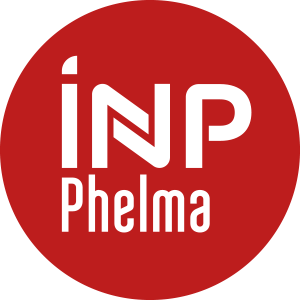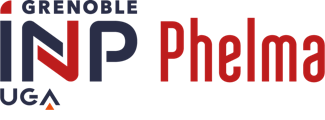Number of hours
- Lectures 20.0
- Projects 0
- Tutorials 20.0
- Internship 0
- Laboratory works 16.0
ECTS
ECTS 4.0
Goal(s)
- To understand the properties of crystalline defects (in particular dislocations) responsible for plastic deformation of structural materials
- To know the relationship between the microstructure of a material and its mechanical properties (yield limit, plasticity)
- To understand the physical mechanisms that control the constitutive equations for the plasticity of structural materials at room temperature and a high temperature
- To feel comfortable with the tools of continuum mechanics
- To know the formalism of basic constitutive equations used to model the mechanical behavior of materials
- To discover the potentialities of industrial codes dedicated to the simulation of forming processes
Content(s)
Course and controled work
Part 1 :
- Crystalline defects: nature and properties
- Yield limit : quantitative link with the microstructure
- Thermal activation of plastic deformation
- Room temperature plasticity: physics of constitutive equations
- High temperature plasticity: physics of constitutive equations
Part 2:
- Continuum mechanics: stress and strain tensors, constitutive equations
- Elasticity : Hooke’s law, thin films
- Plasticity : criteria, isotropic and kinematic hardening, Hill Principle, associated flow law
- Viscoplasticity : strain-rate hardening, creep, Norton’s law, dissipation potential, Odqvist’s law
Practical work
Simulation of a forming process with an industrial finite element code (Ansys, Forge2, Forge3). Emphasis is put on constitutive equations presented during the course (plasticity, viscoplasticity)
Prerequisites
Written examination : 3 h without documents except 1 A4 recto verso page
Proceedings of practical work
Examen écrit 2/3
Rapport de bureau d'études 1/3
Written exam 2/3
Report on practical case 1/3
This course brings 3.0 ECTS to students in UE Materials 2
Introduction to dislocations, D. Hull and D.J. Bacon, Butterworth – Heinemann
The plastic deformation of metals, R.W.K. Honeycombe, Edward Arnold
Fundamentals of creep and alloys, M.E. Kassner, Elsevier
Thermally activated mechanisms in crystal plasticity, D. Caillard and J.L. Martin, Pergamon
Mécanique des matériaux solides, J.L. Lemaitre et J.L. Chaboche, Dunod
Comportement mécanique des matériaux, Vol. 1, Élasticité et plasticité, D. François, A. Pineau, A. Zaoui, Hermès-Lavoisier



